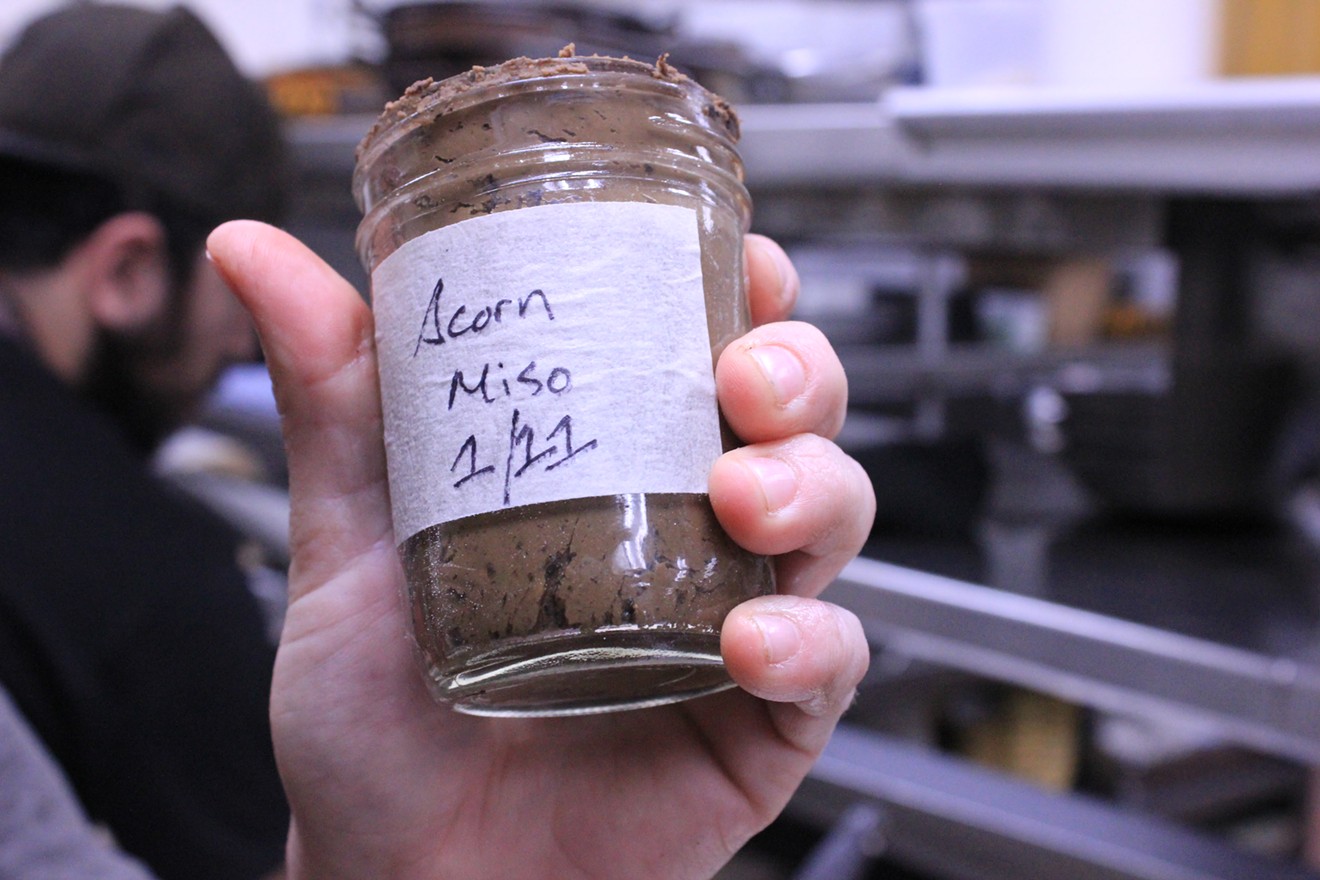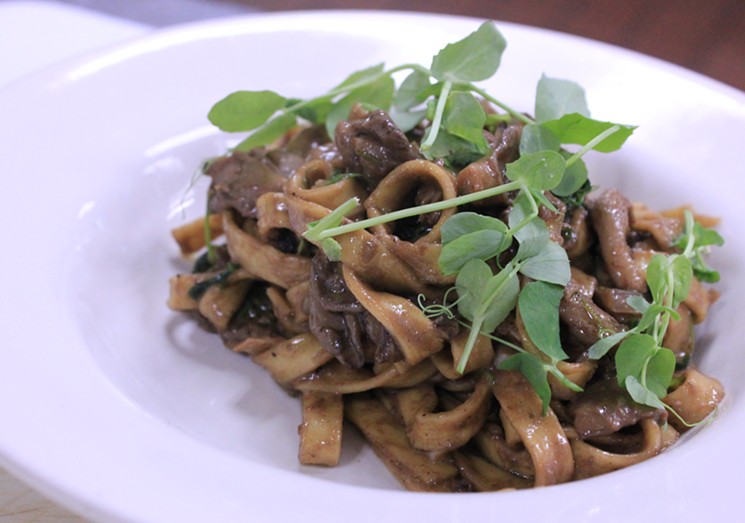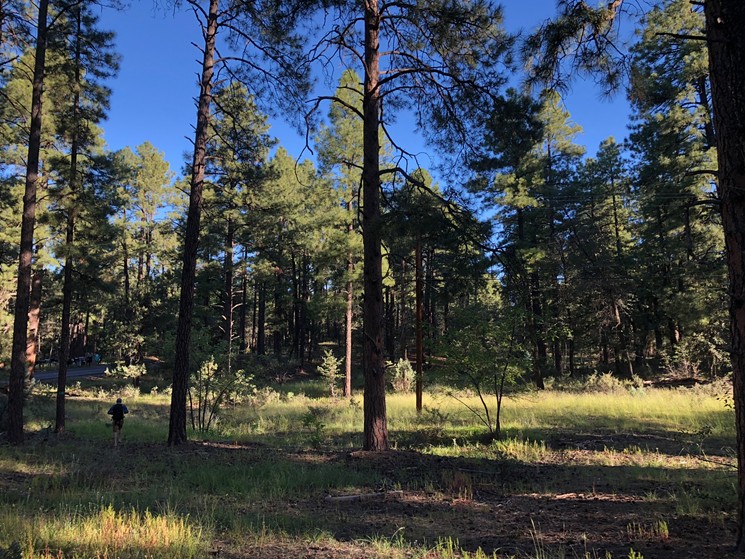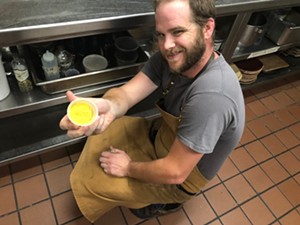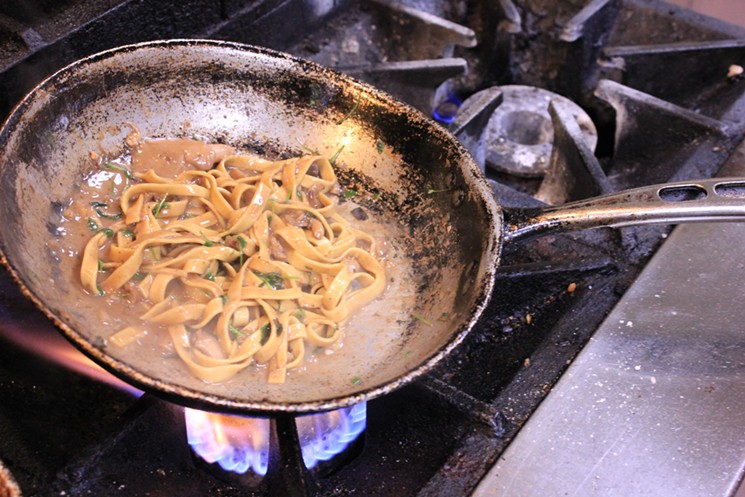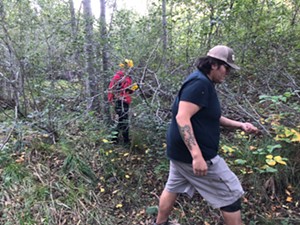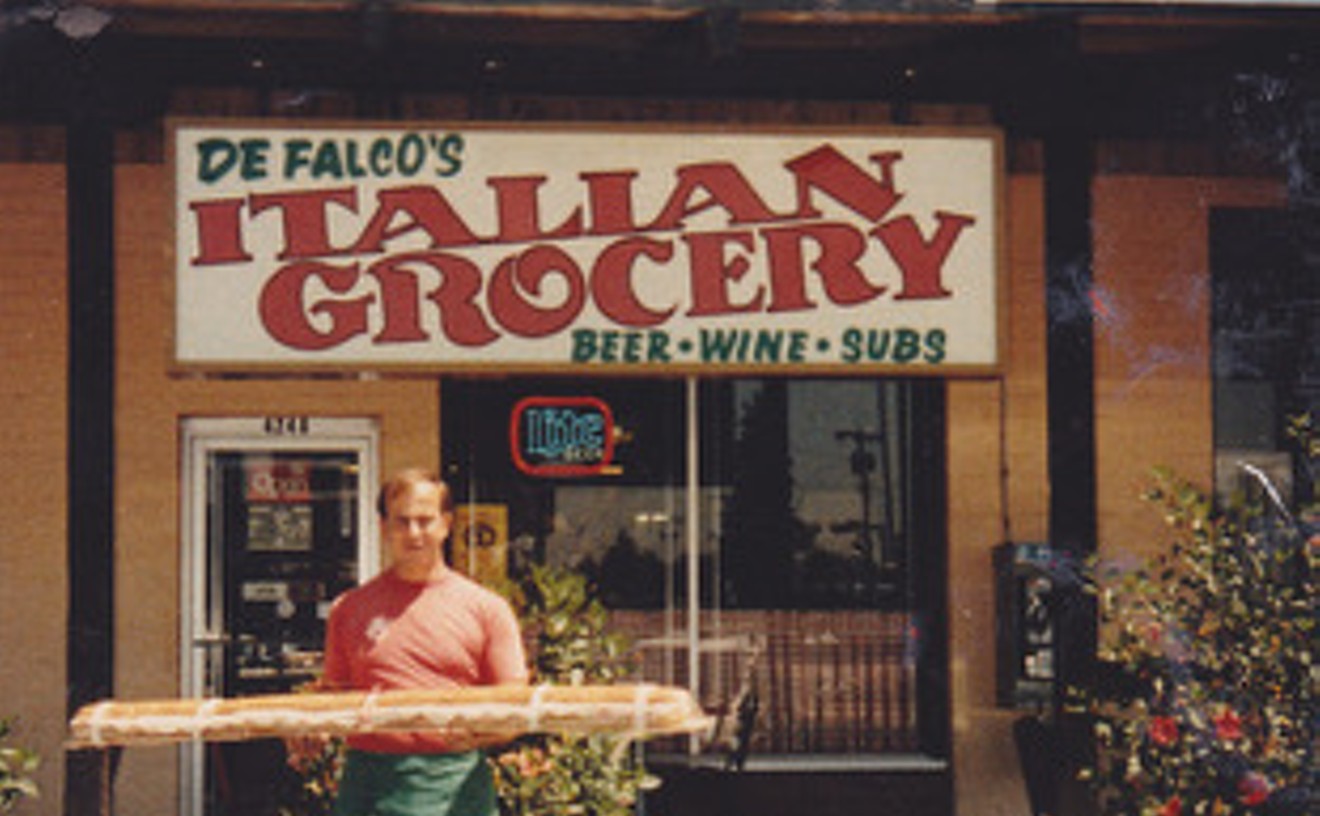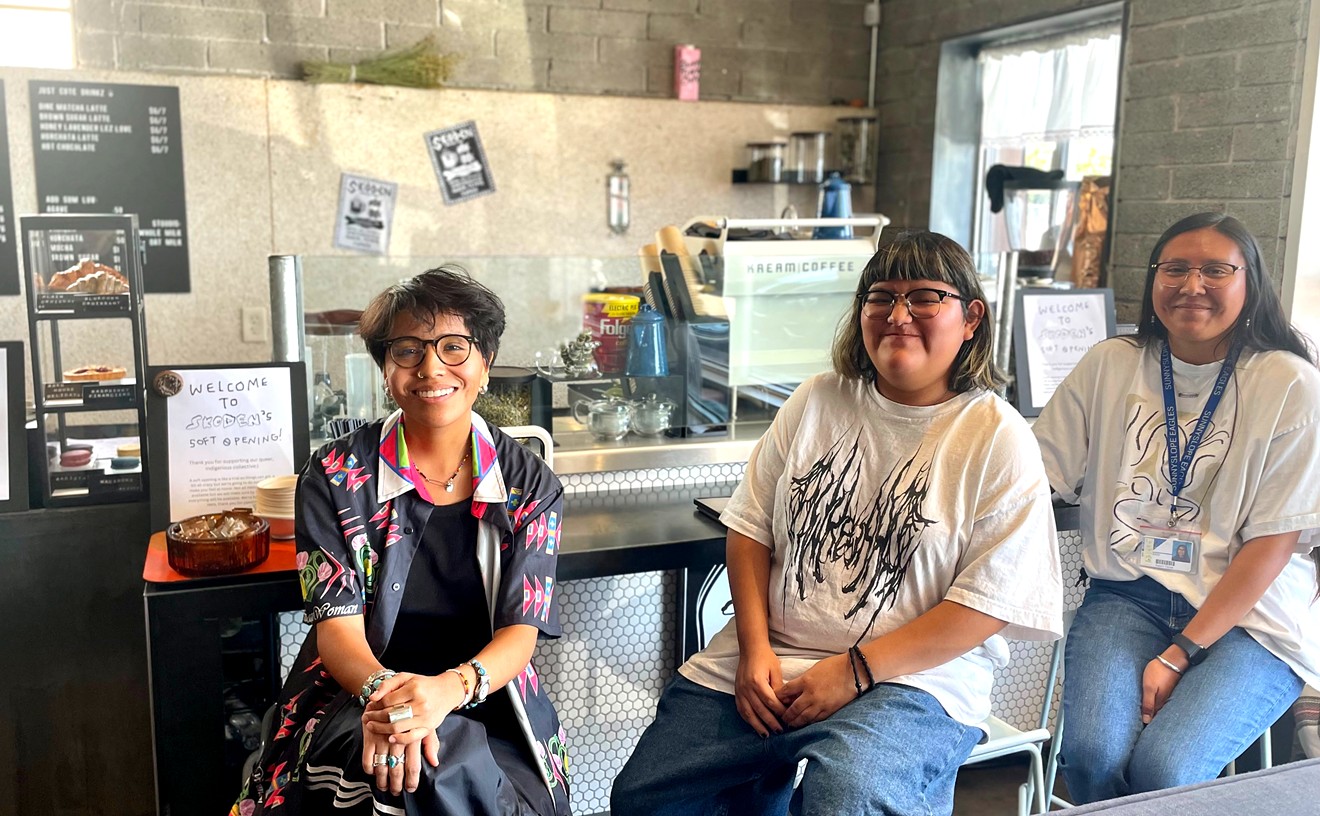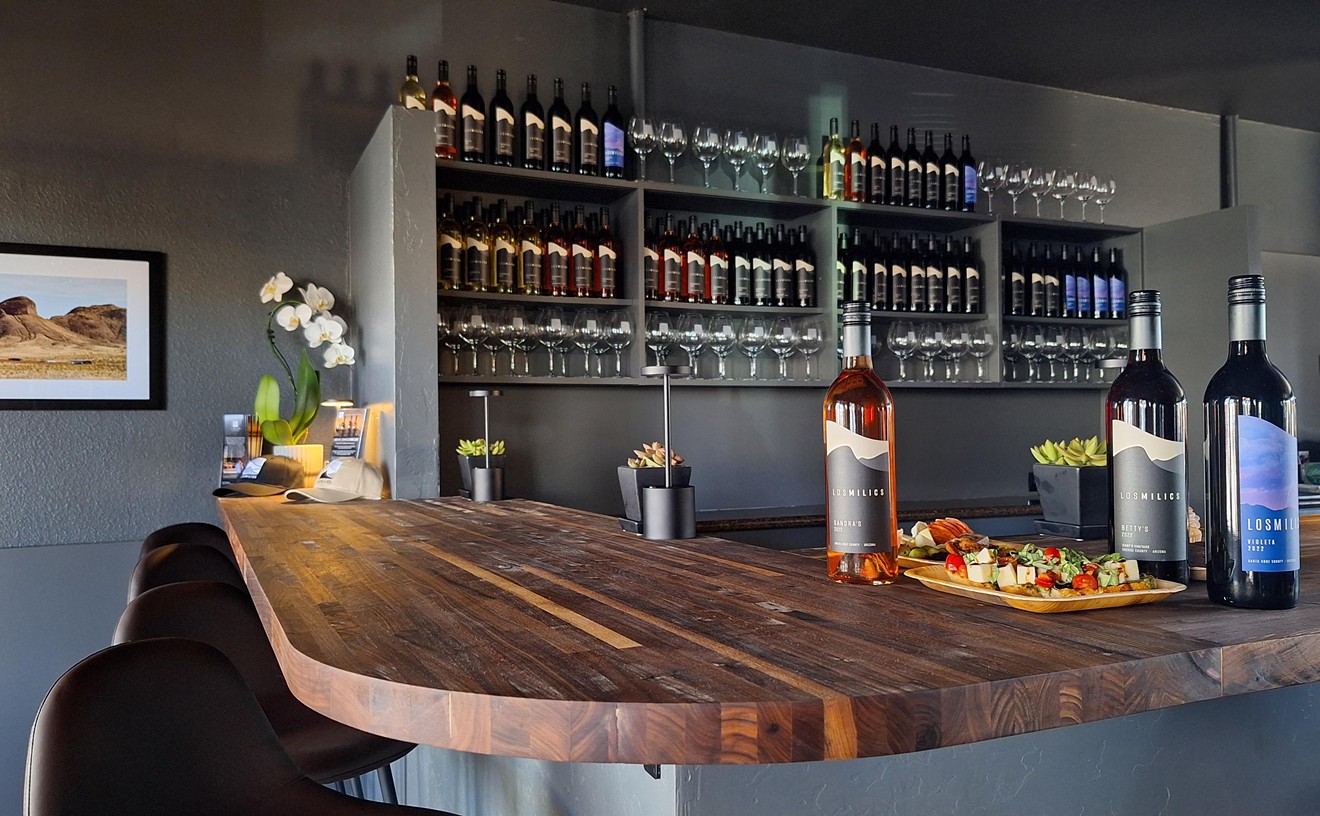Welcome to Sonoran Arcana, a column seeking to probe the margins of Arizona cuisine and define a more specific, novel cuisine that has emerged in America's great Sonoran Desert, New Arizonan. Here, we will venture into the arid wilds and culinary unknown to spotlight the chefs and foragers, the millers and brewers, the miso masters and palo verde pod pickers who are pioneering New Arizonan cuisine, or simply rocking out the food of Arizona. So throw open the doors to your mind and enjoy.
Chimichanga. Citrus. Fry bread. Steel-kissed flour tortilla with melted butter. Grass-fed steak raised in the Verde Valley. Wild tree mushrooms from the northern forests. Corn, squash, and beans — the three ancient sisters. Cactus fruit the color of a peyote rainbow: magenta prickly pear, topaz barrel cactus, beet-hued organ pipe. These foods are Arizonan, or are widely linked with the 48th state. But the most Arizonan food I’ve eaten all year? Miso.
Miso, of course, isn't Arizonan. It arose in China and evolved in Japan. When people think of miso, of its salty streets in an umami netherworld, Arizona isn't what springs to mind. But the same was once true of Thailand and the chili pepper, of Italy and the tomato.
The Arizona miso I tried was acorn miso. Most miso packs a haymaker of salt. This miso, however, had a mere saline whisper, lowering the volume enough for subtler notes to lucidly resound: an earthy, loamy sweetness, delicate nuttiness, and a deeply mushroomy coolness as sublime as porcini — everything conspiring to vortex you, ceasing to ponder flavors and now simply enjoying, to the northern forests.
I also tried the miso in a pasta made from a dough of mesquite flour, acorn flour, and White Sonora wheat. The pasta — thick, chewy, and darkly sweet from the flour blend — was tossed with a scoop of loam-hued acorn miso and acorn-cap butter (the cap being the one part not used in the miso).
In the steamy tangle on the plate, there was acorn flour, acorn butter, and acorn miso. It was a terra incognita test dish, an acorn polygamy, an unlikely application of an unlikely miso long in the creating.
“This will be great for the rest of the winter and our tastings,” said Brett Vibber, chef at Cartwright’s Modern Cuisine, after tonging flat noodles, pea tendrils, and oyster mushroom from hot steel pan to plate. Fork in hand, he conferred with one of his many sous chefs, Jaren Bates. “We’ve been thinking about this pasta for two years.”
Vibber and Bates have been exploring and expanding miso. They have been making the Japanese staple Arizonan, giving it a fresh and wild poetry. Recently, they made miso from foraged Gambel oak acorns, tepary beans, and Navajo steam corn.
The seed of the idea to make miso was planted 12 years ago, when Vibber and Bates cooked at the Japanese eatery Roka Akor, basting eggplant and young chickens in red miso. It germinated last year, when they had a fateful conversation with Atsuo Sakurai, the Japanese transplant and Holbrook resident behind what Tokyo's 2018 Sake Competition named the world’s best sake brewed outside of Japan, Arizona Sake. Vibber recalls Sakurai, proposed with the idea of Arizona-made miso, lighting up and replying, “I have always dreamed of an acorn miso."
"I want to invite young, passionate chefs to make miso," Sakurai says. "We have natural Arizona native things. And we can mix in the miso, or pair with the miso. That's what I'm thinking right now." Sakurai, though, just broke ground on a sake brewery and hasn't had time to get the koji rolling with many chefs.
Nevertheless, the other weekend, the first of the three misos the trio collaborated on was ready.
All said, Japan knows more than 1,000 kinds of miso. Still, Sakurai, born in Yokohama, had to laugh at the idea of acorn miso. Vibber says, “He was sure it’s never been done."
Acorn miso is the kind of pantry staple that Vibber makes and uses. He is a leading pioneer of New Arizonan, a cuisine just now emerging in metro Phoenix. The cuisine has several hallmarks, including, definitively, the application of global techniques (like miso making) to ancient Arizonan ingredients from the desert and forests (like acorns).
Vibber bases his cooking around foraged ingredients from these diverse environments, serving fiddlehead ferns with deer, scallops with prickly-pear-fennel gastrique. His team of cooks forages more than 200 days a year. He jars, jams, dries, powders, syrups, pickles, and otherwise preserves the large majority of the forage, as many wild ingredients are fleeting, available just a few days a year. Vibber also has Japanese training; miso snugly fits his restaurant's paradigm.
His foragers go dormant from mid-fall to mid-winter. “The end of foraging season is a perfect time to regroup, see what the final hauls were as far as weights,” Vibber says. “But it’s also a time to say where we expand next year.” Downtime is time to adjust strategy, to experiment.
For instance, two seasons ago, Vibber and his team foraged just a little bit of sumac. Soon, he found himself starting to use the spice more frequently, so the next foraging cycle he was sure to collect more. In 2019, his kitchen leans on sumac for brightness when citrus is out of season.
In 2018, Vibber angled for more acorns so that he could experiment in the present off-season (when Cartwright's remains open). “Last year, we got less than 20 pounds of acorns,” he says. “This year, we got 67 pounds. We had enough for our flour. But also, we wanted to make acorn miso.”
Miso is a food that dates back to at least Han Dynasty China. Popularized in Japan, today’s miso is a product of koji (rice or grain treated with the fungus Aspergillus oryzae), legumes, salt, and time. Koji gets the blend fermenting. A rough paste results, each spoonful a detonation of salt and umami. (Koji is also the keystone of sake; Sakurai has long used his own.)
Miso is a pillar of Japanese cuisine. The late writer Shizuo Tsuji described its virtues and ubiquity. “Packed with protein, and appealing because of its aroma and taste, miso is one of Japan’s most important staples,” he wrote in 1980, in Japanese Cooking: A Simple Art. “Every Japanese — 110 million — on the average consumes a few spoonfuls a day in one form or another.”
This century, miso has evolved in other quadrants of the globe.
For one: Denmark.
“We’ve made miso from rye bread and corn and hazelnuts,” write René Redzepi and David Zilber in 2018's The Noma Guide to Fermentation, sharing fermentation intel from Denmark’s venerable Noma. “We’ve tried different legumes, from Scandinavia and beyond, like lupin and black beans, and different grains as well. It’s an ongoing project that keeps surprising and thrilling us at every turn."
Vibber’s acorn miso marks another step in evolution — of miso, of Arizona cuisine.
He, Bates, and Sakurai crafted it from Gambel oak acorns foraged near Payson, just south of the Mogollon Rim, where at last the Sonoran ends. As is the case any time acorns are prepared for eating, Vibber says, the process is long. “The acorns got boiled, pulled, roasted, and then shelled. Then those sat in water with a bit of salt, a little bit of soy, the koji, and the kasu."
Vibber’s batch of acorn miso (a second batch is with Sakurai for longer fermentation) contains kasu, lees that are a byproduct of the sake Sakurai brews in his garage. Lees are residual yeast and particulate leftovers. Sake lees look pale and malleable, like white pork fat, like snowbanks of dry cookie dough. They smell heady and floral, almost like mead.
The choice of acorns may seem offbeat or druidic, but keys smoothly into Arizona’s past. The Apache, Navajo, and Tohono O’odham people all had culinary endpoints for acorns, often stews or bread. South of the border, in northern Mexican states like Sonora, acorns, called bellotas, are gathered and sold at market. Today, if you look hard, you can catch an acorn or two in the hands of traditional and pioneering metro Phoenix cooks. Tamara Stanger, chef at Cotton & Copper, plans to serve acorn soup at Devour this month.
Bates has been using acorns longer than Vibber. “When me and my younger brother would get firewood from the Mexico-Arizona border, there were a bunch of oak trees on top of the mountains,” he explains. “I did more knowledge on it, and found you could eat them. So after that, when we would go to get wood, I would wander off for a few hours to see if we could get acorns.”
Vibber’s other two misos, still constructing themselves, are just as wholly Arizonan.
The tepary bean miso is based on a legume that has become legend in the Sonoran Desert. Brought back from virtual extinction by Ramona Farms and Native Seeds/SEARCH, the tepary bean thrives in alkaline soils and drought-like conditions. It does this by rapid development, speeding through its reproductive cycle. Tepary roots outspread deeply into the Arrakeen desert soil, tapping into remote water sources.
The Navajo steam corn miso uses corn that, come late summer, Vibber and Bates cook in the ground the Navajo way. Bates is Navajo, born and raised on the Navajo reservation. He continues the tradition that he grew up with on his family farm. His Navajo steam corn is heady, a song of smoke and earth. Who knows what koji, salt, and time will bring?
The first batch of acorn miso, both Bates and Vibber proudly say, was a felicitous success.
Bates thought it tasted similar to standard red miso, the kind they cooked with a decade ago. “It had the same kind of sweetness and nuttiness, but not nearly as salty, more smooth and balanced,” he says.
Vibber echoes his friend and sous chef. “I am happy, but I’m anxious to try a longer fermentation,” he says. “I’m always anxious to see what time and patience bring."
Cartwright's Modern Cuisine. 6710 East Cave Creek Road, Cave Creek; 480-488-8031.
Daily from 4 to 9 p.m.
[
{
"name": "Air - MediumRectangle - Inline Content - Mobile Display Size",
"component": "18478561",
"insertPoint": "2",
"requiredCountToDisplay": "2"
},{
"name": "Editor Picks",
"component": "16759093",
"insertPoint": "4",
"requiredCountToDisplay": "1"
},{
"name": "Inline Links",
"component": "17980324",
"insertPoint": "8th",
"startingPoint": 8,
"requiredCountToDisplay": "7",
"maxInsertions": 25
},{
"name": "Air - MediumRectangle - Combo - Inline Content",
"component": "16759092",
"insertPoint": "8th",
"startingPoint": 8,
"requiredCountToDisplay": "7",
"maxInsertions": 25
},{
"name": "Inline Links",
"component": "17980324",
"insertPoint": "8th",
"startingPoint": 12,
"requiredCountToDisplay": "11",
"maxInsertions": 24
},{
"name": "Air - Leaderboard Tower - Combo - Inline Content",
"component": "16759094",
"insertPoint": "8th",
"startingPoint": 12,
"requiredCountToDisplay": "11",
"maxInsertions": 24
}
]

